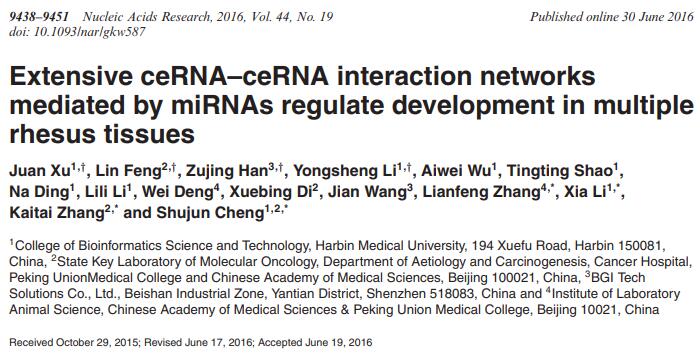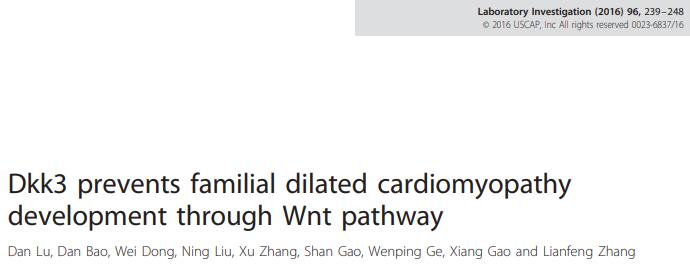-

FKBP51 Null Mice Are Resistant to Diet-Induced Obesity and the PPARγ Agonist Rosiglitazone
FK506-binding protein-51 (FKBP51) is a molecular cochaperone recently shown to be a positive regulator of peroxisome proliferator-activated receptor (PPAR)γ, the master regulator of adipocyte differentiation and function.详情 -

Extensive ceRNA–ceRNA interaction networks mediated by miRNAs regulate development in multiple rhesus tissues
Crosstalk between RNAs mediated by shared microRNAs (miRNAs) represents a novel layer of gene regulation, which plays important roles in development. In this study, we analyzed time series expression data for coding genes and long non-coding RNAs (lncRNAs) to identify thousands of interactions among competitive endogenous RNAs (ceRNAs) in four rhesus tissues.详情 -

Dkk3 prevents familial dilated cardiomyopathy development through Wnt pathway.
To date, the role of Dickkopf 3 (Dkk3) on the pathogenesis of familial dilated cardiomyopathy (FDCM), and whether and how Dkk3interferes with Wnt signaling in heart tissues remains unknown.详情 -

Cyanidin 3-O-β-glucopyranoside activates peroxisome proliferator-activated receptor-γ and alleviates cognitive impairment in the APP(swe)PS1(ΔE9) mouse model
Alzheimer's disease (AD) is currently one of the most common neurodegenerative disorders worldwide. To date, no cure has been developed for AD, and some disease-modifying treatments show side effects and low efficacy.详情 -

Cross-Species Analysis of Gene Expression and Function in Prefrontal Cortex, Hippocampus and Striatum.
Mouse has been extensively used as a tool for investigating the onset and development of human neurological disorders. As a first step to construct a transgenic mouse model of human brain lesions, it is of fundamental importance to clarify the similarity and divergence of genetic background between non-diseased human and mouse brain tissues.详情
2025年03月27日 星期四 您是第16784574位访客

 微信公众号
微信公众号 京公网安备11010502033649
京公网安备11010502033649